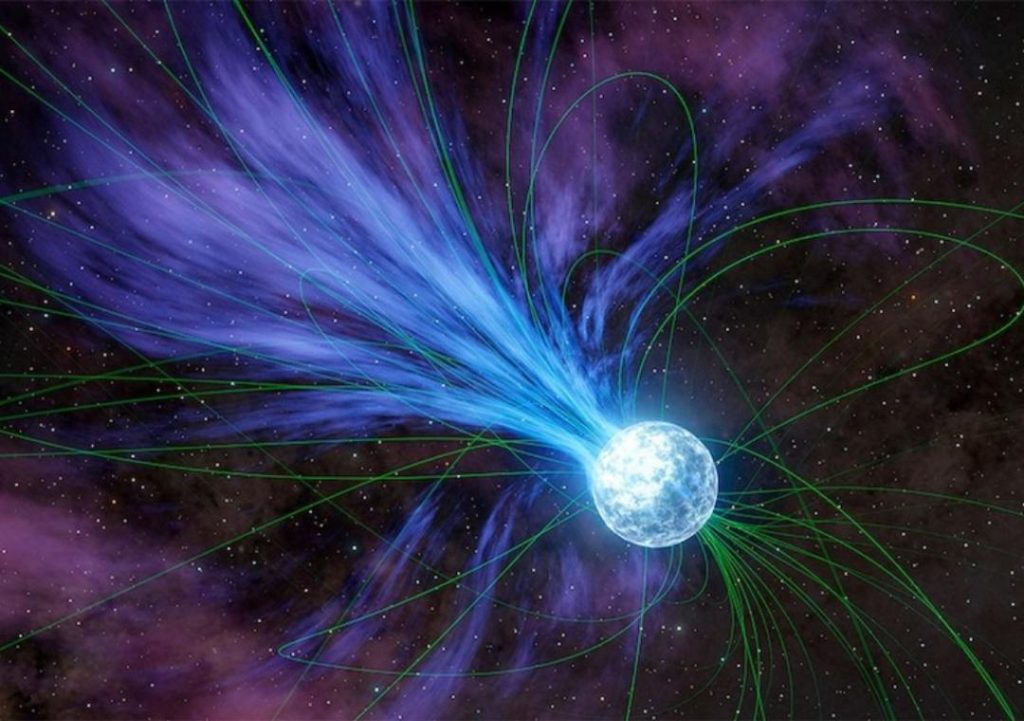
Gold & Platinum Created through Neutron Stars’ Explosions: Study
For centuries, humans have been fascinated by the origin of precious metals like gold and platinum. While they are abundant on Earth, their formation processes have remained shrouded in mystery. But, thanks to a groundbreaking study led by Columbia University student Anirudh Patel, we finally have an answer. According to the research, gold and platinum were created through the explosive events of magnetars, or highly magnetized neutron stars.
Magnetars are incredibly powerful objects that are found at the center of certain supernovae explosions. They are known for their intense magnetic fields, which are thousands of times stronger than the Earth’s magnetic field. These powerful fields can cause the star to release massive amounts of energy in the form of flares, which can be detected from great distances.
The study, which was published in The Astrophysical Journal, suggests that one of these magnetars exploded over 20 years ago, releasing a massive amount of energy and creating the elements gold and platinum in the process. The explosion was so powerful that it would have been visible from Earth, but unfortunately, it occurred in a distant part of the universe and was not detected by astronomers at the time.
The researchers used data from NASA’s Fermi Gamma-Ray Space Telescope to study the explosion and its aftermath. They found that the magnetar had released a massive amount of energy in the form of gamma rays, which is a type of high-energy radiation. This energy was likely responsible for creating the elements gold and platinum through a process known as rapid neutron capture, or r-process nucleosynthesis.
R-process nucleosynthesis is a process in which atomic nuclei are fused together to form heavier elements, such as gold and platinum. This process occurs when a massive star runs out of fuel and collapses under its own gravity, causing a massive explosion that releases a huge amount of energy. The intense radiation produced by this explosion can cause the atomic nuclei to fuse together, forming heavier elements.
The researchers used computer simulations to recreate the explosion and study its effects on the surrounding environment. They found that the explosion would have created a massive amount of gold and platinum, which would have been dispersed throughout the surrounding space.
The discovery of gold and platinum in the explosion is significant because it provides evidence for the r-process nucleosynthesis theory. This theory has been widely accepted by scientists, but it has been difficult to test directly. The discovery of gold and platinum in the explosion provides strong evidence for the theory and helps to confirm our understanding of the formation of these elements.
The study also provides insight into the formation of other elements, such as platinum and palladium. These elements are also thought to have been created through r-process nucleosynthesis, and the discovery of gold and platinum in the explosion helps to confirm this theory.
The study’s findings also have implications for our understanding of the universe. The explosion of the magnetar would have released a massive amount of energy, which would have had a significant impact on the surrounding environment. The researchers suggest that the explosion would have caused the surrounding gas and dust to heat up, leading to the formation of new stars and planets.
The study’s findings also have implications for the search for extraterrestrial life. The discovery of gold and platinum in the explosion provides evidence that these elements can be created through natural processes, which could potentially lead to the formation of habitable planets. The study’s findings could also provide insight into the origins of life on Earth, as the elements gold and platinum are both found in the Earth’s crust.
In conclusion, the study led by Columbia University student Anirudh Patel has provided new insight into the origin of precious metals like gold and platinum. The discovery of gold and platinum in the explosion of a magnetar provides evidence for the r-process nucleosynthesis theory and helps to confirm our understanding of the formation of these elements. The study’s findings also have implications for our understanding of the universe and the search for extraterrestrial life.






